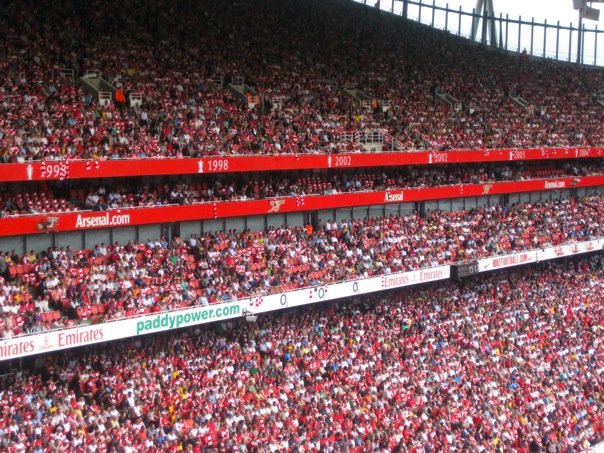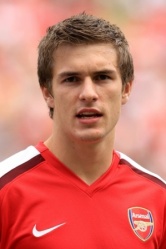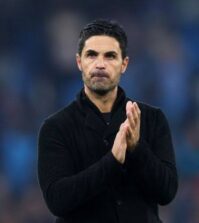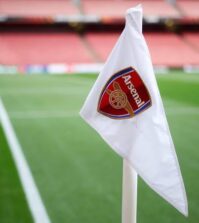- Arsenal push for Rodrygo as Fabrizio reveals key update
- Arsenal could attempt to sign Atalanta’s Ademola Lookman
- Arsenal could revive interest in signing Ollie Watkins
- Arsenal reach £52m deal to sign Chelsea star Madueke
- Arsenal to table formal offer for Eberechi Eze
- Arsenal remain keen on signing Crystal Palace’s Eberechi Eze
- Arsenal confirm Christian Nørgaard signing from Brentford
- Arsenal still in negotiations to sign Benjamin Sesko
- Arsenal submit formal bid to sign Noni Madueke
- Arsenal target Blackburn’s teenage star Igor Tyjon
Three Questions about the 4-3-3

You've been Arsenalised!!!
For me, there are three main questions which are yet to be answered following the first three matches. Admittedly, none can be answered in a weekend or two and I believe each holds part of the key to how successful Arsenal can be with this formation this season. First, what have we learned about the 4-3-3 in the pre-season and, now, the first week. Well, we have learned that it produces goals, mostly from midfield. We have learned that the 3-man midfield is providing more cover for the defense than last season, when it was Song’s responsibility alone. I would think that we have also learned that we may have found a formation that aids us in better breaking down bottom half defenses than the 4-4-2 or 4-5-1 had. But beyond these positives, questions remain:
Can the forwards score goals in this formation?

Another question related to the forwards’ acclimation to the 4-3-3 is… will Nicklas Bendtner be able to cope with his defensive duties when playing wide right? At Everton and Celtic, he did a good job of tracking back when necessary, but does he have the determination to go running up and down the wing for 90 minutes? But running is only half the game, he will also need to defend. Bendtner has been prone to making forward’s tackles and he will need to relearn how to defend. In the first two matches he was defensively adequate but he was not tested by a quality opponent. How would he deal with, say, the Ashley Young who showed up at Liverpool yesterday or Nani on one of his rare good days? This leads us to our next question…
How will it work against the big sides?
Pretty self-explanatory. We’ve seen Arsenal destroy Everton away and dismantle Pompey at home. We’ve also seen a gutsy win at Celtic Park. But how will this formation work against clubs that are far better equipped to exploit its weaknesses? Like I said above, I believe the formation is providing a bit of extra cover in midfield just above the defense but it leaves us a bit more exposed than usual in wide areas. We’ll find out a part of the answer on Saturday when Arsenal travel to Old Trafford. Of course, when you look at the other Big 3, none are especially dangerous coming down the wings. United’s scoring threats are all coming through the middle now and Chelsea have seemingly done the impossible and become even more narrow under Ancelotti. Liverpool have Glen Johnson but he wasn’t nearly as impressive against a decent Villa side as he was against Stoke City.
But even that ignores the fact that the league is not win in matches against the other Big 4 clubs, but against the rest of the league. United didn’t do very well against their direct competitors last season but they pretty much beat every team they should have. Liverpool, by contrast, lost only twice but found themselves on the end of far too many draws against sides they should’ve beat. If, as I proposed above, the 4-3-3 will enable us to better break down lower-level clubs who park the bus, that could prove the difference this season.
How will it work without Cesc and/or Song?
This is something we cannot help but wonder. Both Cesc and Song have been integral to the club’s successful start. Cesc has always been the focal point of the team no matter the formation, but Song has shown that he is an integral part of this 3-man midfield. The side coped well with Diaby coming in for Song against Portsmouth and Denilson falling back but it was only Portsmouth. Unfortunately, we will get our first clue to our coping abilities without Cesc when Celtic come to the Emirates. Cesc suffered a hamstring problem during the Portsmouth match and could even miss out on the trip to United. Can Diaby and/or Denilson provide enough cover for the defense when Song is out, or off to the ACN, and can Ramsey, Wilshere, or Nasri when he returns, step up and deliver the creativity lost when Cesc is out?
These are the questions which, for me, will hold the keys to Arsenal’s possibilities for success these season. We can speculate as much as we want but only many more games will give us the answers. [digg=http://digg.com/soccer/Three_Questions_about_the_4_3_3]








5 Comments